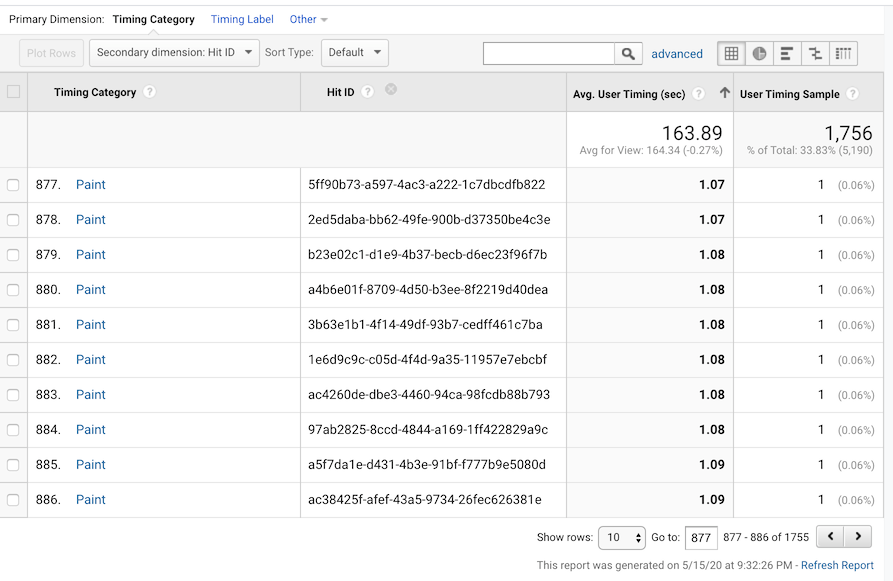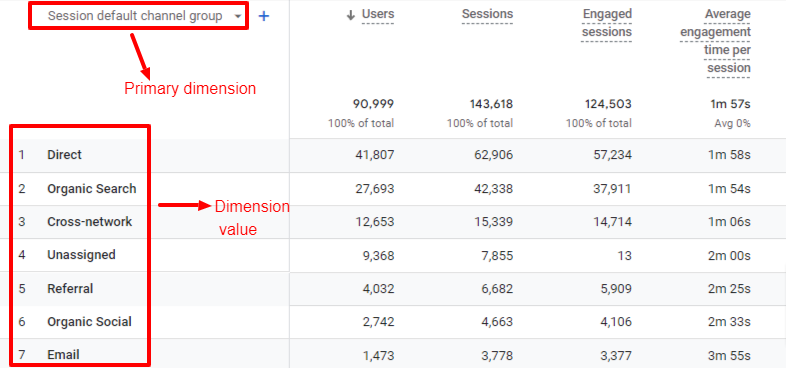Maximize Your Coverage with Secondary Dimension in Google Analytics
Maximize Your Coverage with Secondary Dimension in Google Analytics
Blog Article
Transform Your Analytics Technique With Additional Dimension in Google Analytics
Exploring the capacity of secondary dimensions in Google Analytics opens up a world of opportunities for organizations seeking to elevate their analytical approach. By integrating secondary measurements right into data evaluation, a brand-new layer of insights emerges, shedding light on elaborate individual habits and communications. This innovative degree of analysis not just improves advertising techniques but additionally deciphers hidden possibilities for optimization and development. The critical application of additional dimensions holds the crucial to unlocking a prize trove of invaluable details that can transform just how services interpret and act upon their data.
Understanding Additional Dimensions in Google Analytics
Additional measurements in Google Analytics offer additional context to key data by permitting users to assess metrics across a 2nd dimension, supplying deeper insights right into individual actions and communications on a site. Secondary Dimension in Google Analytics. While key dimensions supply essential data points such as pageviews, bounce rate, and session duration, additional measurements supply a more comprehensive sight by segmenting the key information further. This segmentation permits users to evaluate metrics in mix with an additional dimension, such as web traffic resources, demographics, or customer behavior
Benefits of Utilizing Secondary Dimensions
Using second dimensions in Google Analytics offers a critical advantage by improving the depth of evaluation and providing a more thorough understanding of individual communications and behavior on a web site. By incorporating second measurements, experts can get beneficial insights right into the efficiency of details segments or variables within their data. This allows a much more in-depth exam of individual actions past surface-level metrics, permitting for a deeper exploration of the aspects affecting customer engagement and conversions.

How to Carry Out Additional Dimensions
When including secondary dimensions in Google Analytics, one essential step is to choose the pertinent metrics and dimensions to enhance the evaluation process. Clicking on this button will certainly open a drop-down food selection listing numerous dimensions that can be added to your key dimension for much deeper insights.
After picking the suitable second dimension, such as 'Source/Medium' or 'Gadget Group,' Google Analytics will show the data in a more thorough style, permitting you to cross-analyze different elements of user actions. Bear in mind to explore different mixes of additional and key measurements to discover important patterns and trends that can educate your advertising and marketing techniques. By implementing second dimensions attentively, you can obtain a much more detailed understanding of your website or app efficiency and make data-driven decisions to optimize your digital visibility.
Analyzing Data With Secondary Dimensions
Boost your data evaluation in Google Analytics by including secondary measurements to dive much deeper right into customer behavior patterns and optimize your digital advertising strategies effectively - Secondary Dimension in Google Analytics. By including second measurements to your key i was reading this information, you can get beneficial insights that can aid you make notified decisions concerning your web site or app efficiency
Examining data with second dimensions permits you to sector your main information additionally, providing an extra extensive sight of user communications. Combining the main measurement of 'source/medium' with a secondary measurement like 'landing web page' can reveal which details pages are driving website traffic from different resources. This information can be crucial in improving your material strategy or enhancing your advertising campaigns to boost conversions.
Furthermore, using secondary measurements enables you to determine relationships between different metrics, assisting you understand the effect of various elements on individual habits. Whether it's evaluating demographics alongside user interaction metrics or gadget groups with conversion prices, secondary measurements encourage you to uncover covert patterns and patterns that can direct your advertising and marketing initiatives.
Maximizing Efficiency With Second Measurements
To boost the efficiency of information evaluation and decision-making in Google Analytics, integrating additional dimensions is essential to optimizing performance metrics and gaining much deeper understandings right into individual habits patterns. By utilizing secondary dimensions, experts can dive beyond surface-level data and uncover valuable correlations that may or else go undetected. This optimization approach allows services to tailor their marketing initiatives a lot more successfully, determine areas for improvement in website use, and boost general user experience.
Second measurements provide a more extensive view of customer communications by supplying extra context to main data metrics. For instance, pairing the key measurement of 'touchdown page' with an additional dimension like 'device category' can disclose whether specific devices are more probable to drive involvement on certain landing pages. This understanding can educate responsive layout renovations or targeted advertising and marketing approaches to enhance efficiency.

Final Thought
In final thought, the assimilation of second dimensions in Google Analytics offers companies with a powerful tool to boost their analytics strategy. Secondary Dimension in Google Analytics. By delving deeper into individual habits and interactions, online marketers can reveal valuable understandings that can drive performance optimization check out here and enhance the overall customer experience. Leveraging secondary measurements enables an extra extensive evaluation of information, leading to more enlightened decision-making and tailored marketing initiatives
Secondary measurements in Google Analytics offer added context to main information by enabling customers to evaluate metrics throughout a 2nd dimension, offering deeper understandings into customer behavior and communications on a website. While main measurements supply basic information points such as pageviews, bounce price, and session period, additional dimensions offer an even more thorough view by segmenting the key data further.One of the key benefits of utilizing second measurements is the capability to reveal correlations and patterns that may not be immediately evident when evaluating information with primary dimensions alone.When integrating secondary measurements in Google click now Analytics, one essential action is to pick the pertinent metrics and dimensions to enrich the evaluation procedure. Matching the primary dimension of 'landing page' with an additional dimension like 'device classification' can reveal whether certain devices are much more likely to drive engagement on specific landing web pages.
Report this page